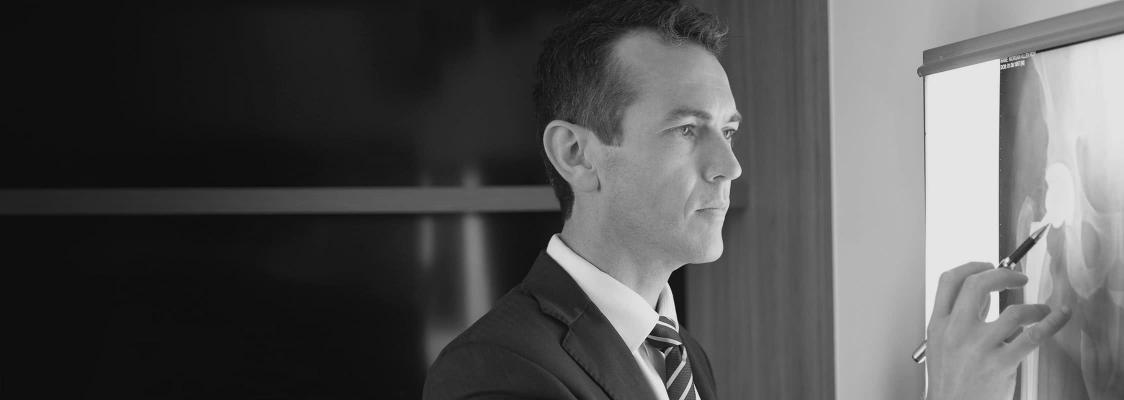There are multiple reasons why people who have previously undergone total hip replacement may require their hip replacement surgery to be re-done or revised.
Reasons for hip replacements to be revised are numerous. These include:
- Repeated instability events (dislocations).
- Fractures of the pelvis or femur bone causing the hip replacement to become loose (this can occur around the time of the initial surgery or following a severe fall or injury some time afterwards).
- Slow but progressive loosening of the hip replacement parts.
- Infection in and around the artificial parts.
- Unequal length of the legs following surgery.
- Wearing out of the artificial parts.
- Destruction of bone around the hip replacement (at the top of the femur or within the pelvis).
- Persistent pain in and around the hip joint.
Most modern-day hip replacement prosthetics have excellent longevity. There have been incredible advancements in hip replacement design, manufacture and techniques for hip replacement surgery over recent years and for most people who undergo hip replacement surgery, the initial surgery lasts for their lifetime. Australian data shows that 15 years following hip replacement surgery, only 8.1% of people have required hip revision surgery (91.9% of people have not required any further surgery on their hip replacement).
However, there are many people in the community who have hip replacements that may be as much as 20 or even 30 years old – these implants may well have been cutting edge technology back at the time they were implanted but would be regarded as very outdated these days!
Unfortunately, Total hip replacements, just like any other mechanical device, slowly wear out. The accumulation of damage and wear in these older implants can cause a hip replacement to require revision surgery.
Additionally, there is a small chance that a recent total hip replacement may require revising very early after initial surgery – for reasons such as dislocation, infection, fracture, leg length inequality or component mal-position – approximately 1% of hip replacements done in Australia require revision surgery within the first 12 months according to Australian Joint Replacement Registry data.
If you have a problematic hip replacement – if it is causing you pain, if it dislocates (or feels unstable), if there is swellings, redness (or other signs of infection), or if you have noticed a change in the way your long-lasting hip replacement is behaving, then it is important to have the situation assessed.
In most instances, the best person to see first is the orthopaedic surgeon who performed your original surgery. If this is not possible (e.g. due to geography / distance, retirement, death) or if you have ongoing concerns and wish to have your situation reviewed by an expert independent surgeon, then please contact the rooms. Dr Doneley is an expert in the field of Hip Replacement, performing high volumes of primary, complex primary and revision hip replacement surgery.
Initial appointment(s) are devoted to assessing the current state of the hip replacement and determining the cause for pain, instability or dissatisfaction. This may require additional specialist imaging and blood tests and occasionally requires aspiration or biopsy. Please bring any old x-rays, letters or written details (including your own recollections) regarding your current hip replacement to your appointment.
